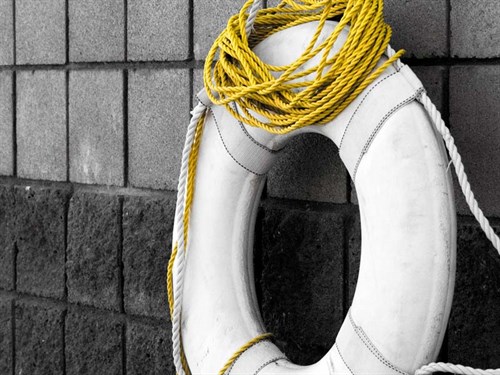Losing someone overboard is every skipper’s worst nightmare, but being prepared will improve the odds of recovering the unfortunate person considerably.
Sod’s Law says if you do have the misfortune to lose a crew member/passenger overboard, it will be at the worst time: the wind’s screaming, tormented seas, it’s night and your engine’s overheating.
So a basic, prepared plan to tackle the crisis correctly is essential – though it may have to be flexible.
There is no single, “correct response” to the situation – it depends on the type of craft, the wind and sea conditions, how many people/crew you have, and the equipment you have on board. In short, you’re going to have to make a judgement.
Which is why, boaties should practice MOB procedures regularly, in all sorts of conditions. Remember, retrieving a lost cap on a flat, calm morning is an entirely different matter from picking up a cold, terrified person in a Force 7 at night.”
Coastguard helped put together this MOB guideline.
Primary Action (irrespective of craft type) – Shout, Throw, Point
Shout – Raise the alarm by shouting: “MAN OVERBOARD!” This alerts everyone aboard to the emergency.
Throw suitable safety equipment – you should have the necessary equipment handy, ready for immediate use. It typically comprises a horseshoe lifebuoy fitted with a drogue (to retard drifting) and a light that activates automatically. It could also be attached to a Danbuoy with flag.
If you don’t have these, throw any flotation device to the person in the water – even a cockpit cushion.
Point – If there are others on board, instruct a crew member/passenger to point at the person/light/flag in the water continuously, and to take particular care to keep them in sight when the boat turns.
Secondary Action – Turn the Boat Around
If you can see the person in the water clearly, and the conditions are benign, a simple 180 degree turn is the quickest. In heavy weather – and at night – the way you tackle the turn requires more consideration.
A light, planing hull (typical trailer boat) will stop very quickly by slamming the throttle(s) into neutral. A larger, heavier boat such a launch will have quite a bit of “way”, and it’s best to initiate a “Williamson turn” to turn on to a reciprocal course.
Slow down immediately, note your course and turn 60˚ to port or starboard for 10-15 seconds before turning the boat back (in the opposite direction of your initial turn) onto a reciprocal course. This is especially important at night, when you may have lost sight of the person.
For yachts under sail, a crash tack is best (unless you’re running under spinnaker, in which case you’ll have to drop the sail first). Centre the main and leave the jib sheeted in, and allow the boat to “hove-to”.
The idea is to stabilise the boat as quickly as possible, while retaining steerage and staying close to the MOB.”
Start the engine then furl/lower the jib. Beware of loose sheets fouling the propeller.
For all craft: If you cannot see the MOB (because it’s night or the sea’s too rough), or if you have any doubt about your ability to recover them, get a crew member to send a “Mayday” on channel 16 your VHF, noting your position.
For those with GPS – most units have a MOB button. Hit it as soon as the alarm is raised. Remember, the MOB function records the coordinates of where the person fell overboard but they will almost certainly drift with the tide.
APPROACH & Recovery
Getting the victim back into the boat can be the hardest part of the rescue. Again there is no absolute answer to the recovery procedure, and it will depend on the type of boat, sea and wind conditions, and whether or not the person in the water is able to help (they may be injured, exhausted or unconscious).
Let the weather help rather than hinder. With most boats, it’s better to motor to just upwind of the person and drift down to the MOB. Throw a buoyant heaving line and make the recovery over the leeward side of the cockpit or over the stern. It’s difficult to throw a line into the wind.”
It’s easiest to pull the MOB aboard over the lowest part of the boat (a swim platform is best on a launch), but the engine(s) must be in neutral (preferably switched off) when the person is being recovered.
With a small boat, pull the person over the stern. This reduces the chance of capsizing due to too much weight on one side of the boat. If the person is too heavy to pull aboard, as a last resort, consider towing them to a nearby beach (if one is handy).
On a yacht, try to get a looped rope under the MOB’s arms, attach it to a halyard and winch the person aboard.
Finally – consider enrolling in one of the Coastguard’s practical boating courses where you will practice all of the manoeuvres described above.


